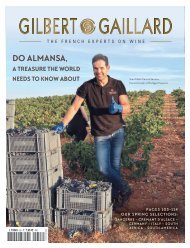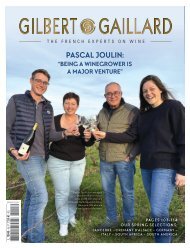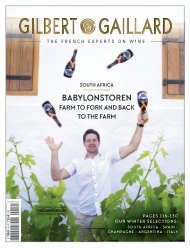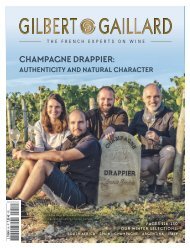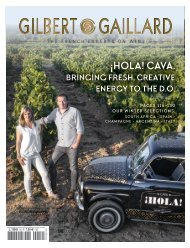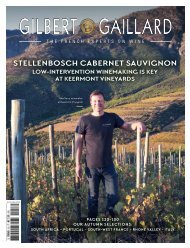You also want an ePaper? Increase the reach of your titles
YUMPU automatically turns print PDFs into web optimized ePapers that Google loves.
ITALY<br />
GRAPE<br />
TREADING THE GRAPES AT THE TRADITIONAL GRAPE HARVEST FESTIVAL IN FONTANA<strong>FR</strong>EDDA<br />
In the Unesco heritage area of the Langhe, Roero and the Monferrato hills, the variety<br />
is called Nebbiolo, but in other areas of Alto-Piemonte, Valle d’Aosta and Valtellina it<br />
takes on different names including Spanna, Chiavennasca, Prunent, Picotendro, Melasca<br />
and Martesana. The documented origins of Nebbiolo date back to the Middle Ages where<br />
it was mentioned in 1272 as being given as a gift to the King of England and Duke of<br />
Aquitaine Edward I. In 1800 it became a favourite of Thomas Jefferson who declared<br />
he wanted to import it to the USA after tasting a ‘Gattinara’. Nebbiolo took its next step<br />
forward in 1835 with Carlo Alberto in Pollenzo where, thanks to General Staglieno, the<br />
winemaker/marketer Oudart and Camillo Benso Count of Cavour, the forerunner of<br />
Barolo was born.<br />
A SLOW RIPENER<br />
Nebbiolo has significant genetic variability and as many as 90 clones have recently been<br />
identified, grouped into seven genotypes according to SNV analyses (Gambino et al.,<br />
2017). In the Langhe you can find Lampia, Michet, Rosé and Bolla. The latter two can no<br />
longer be used for the production of Barolo. Nebbiolo is mostly prevalent in Piedmont<br />
(4 500 ha), Valtellina (50 ha) and Valle d’Aosta (45 ha) but it is also grown outside Italy, in<br />
Mexico, Australia, the USA, Uruguay, Chile and other areas (such as China) for a total<br />
area of around 600 ha. Its growth cycle is long and because it ripens slowly, it can be used<br />
to produce very aromatic wines with a robust structure. It has always been planted in<br />
the best South and South-West aspects (in the ‘sorì’), and only on hilly terrain at between<br />
200m and 450m above sea level. However, nowadays, due to climate change, some producers<br />
are experimenting with less exposed and higher altitude plantings.<br />
WINTER 2022 • GILBERT & GAILLARD - THE <strong>FR</strong>ENCH EXPERTS ON WINE<br />
105






